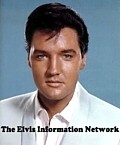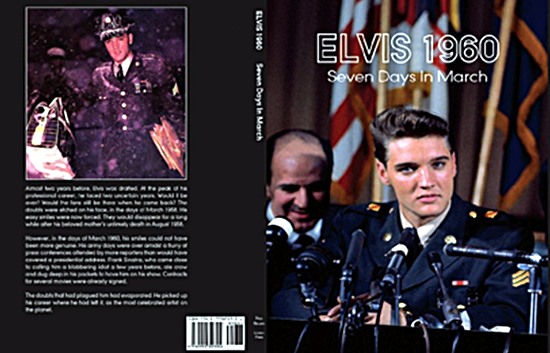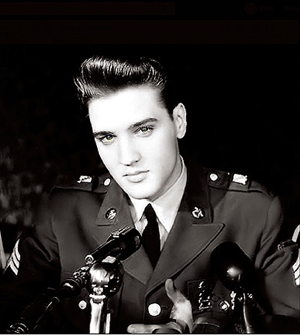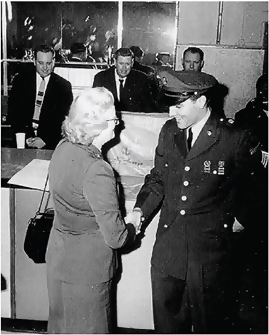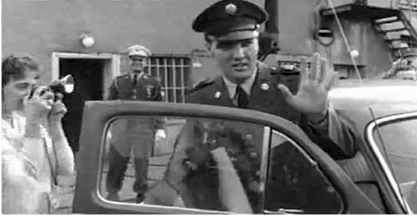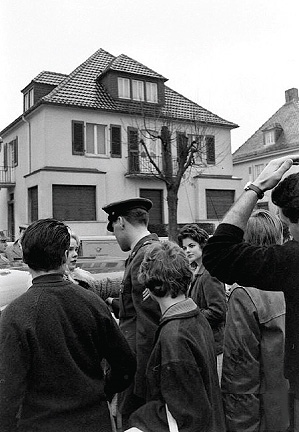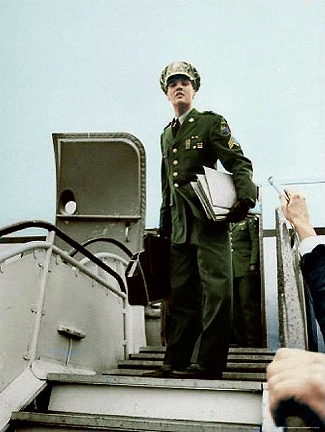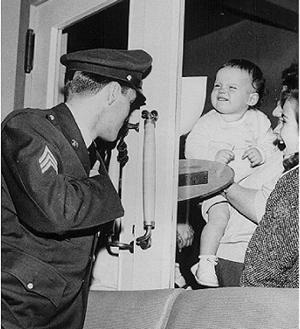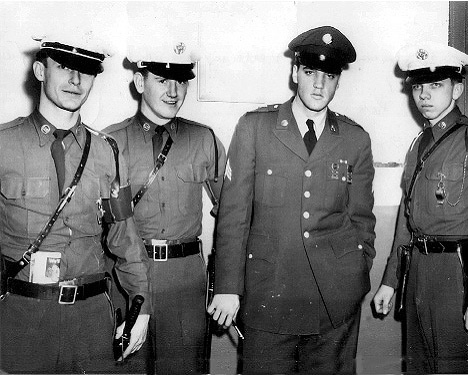 |
 |

Paul Belard's publishing objective is to effectively do what has been done by other author’s in a dominantly narrative form, by presenting the Elvis story (close to day by day) in a predominately visual format. In this respect, he has already released seven volumes with another 40 near completion! In this self-published, limited edition release, Belard focuses on Elvis’ discharge from the Army, hence the book’s title (film enthusiasts will note its name similarity to the Burt Lancaster and Kirk Douglas political film thriller, Seven Days in May). The author sets the scene for his book in his Preface:
However, in March 1960, his smiles could not have been more genuine.......The doubts he had evaporated...... The seven days in March 1960 represented an important "turning point" in the Elvis story. After two years in the Army and away from his fans, a more mature Elvis Presley returned to his homeland with new challenges and frustrations ahead of him.
Elvis' last conference in Friedberg - Meeting Sun Records' Marion Keisker again
Consistent with his intent to record the Elvis story chronologically in pictures, there is minimal text in Elvis 1960 Seven Days in March, Belard letting the hundreds of impressive images tell the story. What narrative there is includes a one-page Preface and each day being introduced by brief text describing the major events of that
Leaving Friedberg
There are substantial sets of photos corresponding to each of the titular seven days, from Elvis' press conference at the enlisted men’s club in Friedberg on Tuesday 1 March to his arrival back in Memphis on Monday 7 March.
There are too many photo highlights to fully detail but they include full page color shots:
while the black and white visual highlights include:
The book also features a number of fascinating and rare “archival” media and industry news reports about Elvis’ discharge and return to America, including articles from The Scottish Daily Mail, The Daily Record (Scotland), Variety and Billboard. The article titles include "Teenagers Mob Presley", "Elvis rocks Scots fans for an hour" and There is also a color image of the “Welcome Home” telegram Elvis received from the Chairman of the Board, Frank Sinatra.
Elvis at his stop-over in New Foundland, Canada
The page design is very effective. The paper stock is of matte type with each page framed in black. The visuals are uniformly of a high standard and many are rare – there are a very small number of poor quality images which Belard has included due to their rarity and historical interest. As a group, the images are an eye-pleasing mix of many black and white and a smaller number of color photos. Many images are full page in size. Elvis 1960 Seven Days In March also includes sections covering Acknowledgements, Websites and Bibliography (with full color cover photos for each listing).
My only minor issue with Elvis 1960 Seven Days In March is that it would have benefited from a Contents page for easy identification of where the visuals for each day start. Verdict: Elvis historian Paul Belard's Elvis 1960 Seven Days in March is another fine release in his series of Elvis photo-books aimed at presenting a full history of the Elvis story in visual form. Its strength is in bringing together all of the most important and rare photos relating to Elvis' Army discharge and return to Memphis as well as historically important archival material.
Contact Paul Belard to buy Elvis 1960 Seven Days In March
Read EIN’s review of Elvis Black and White to Technicolor
|
|
